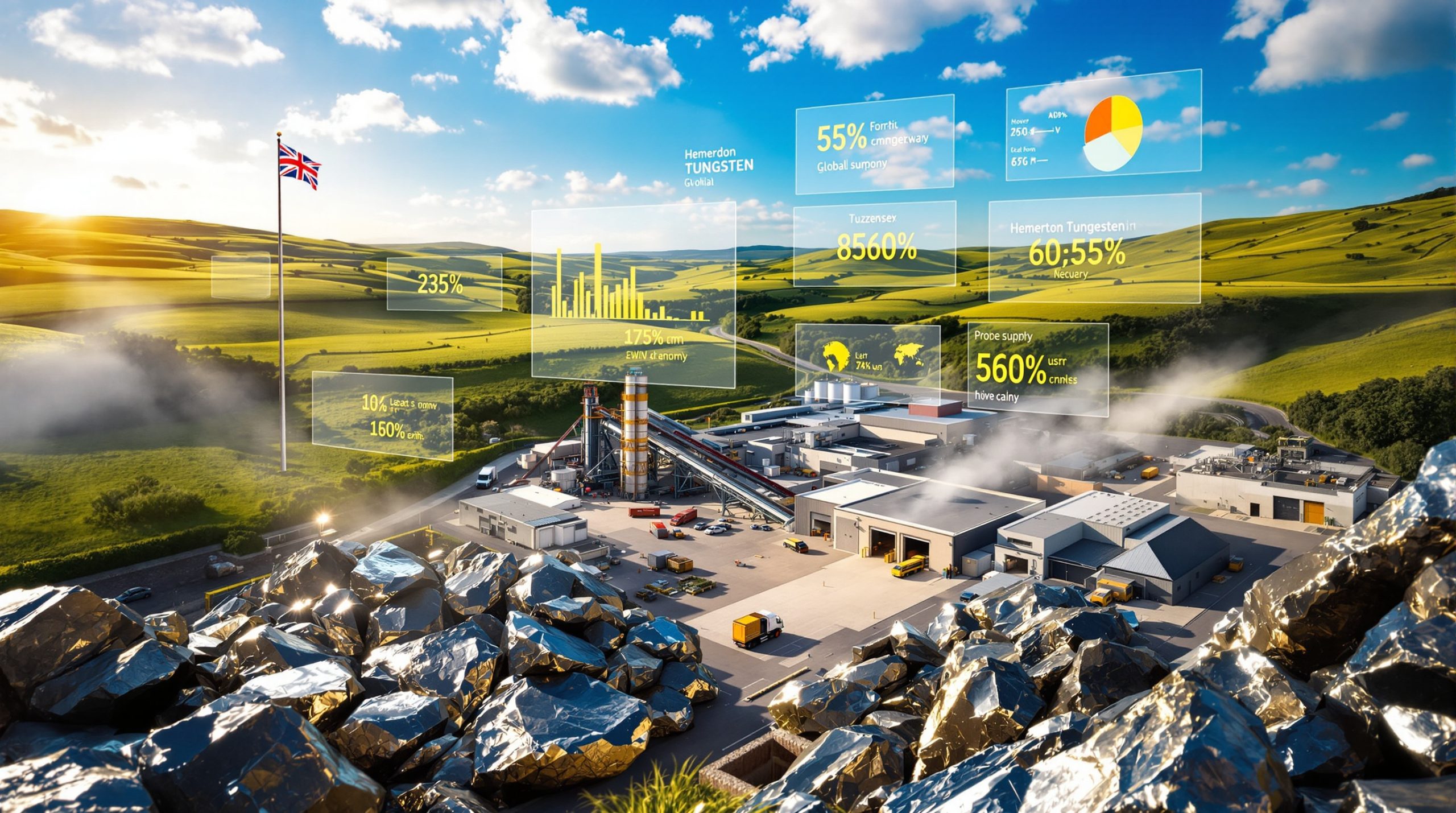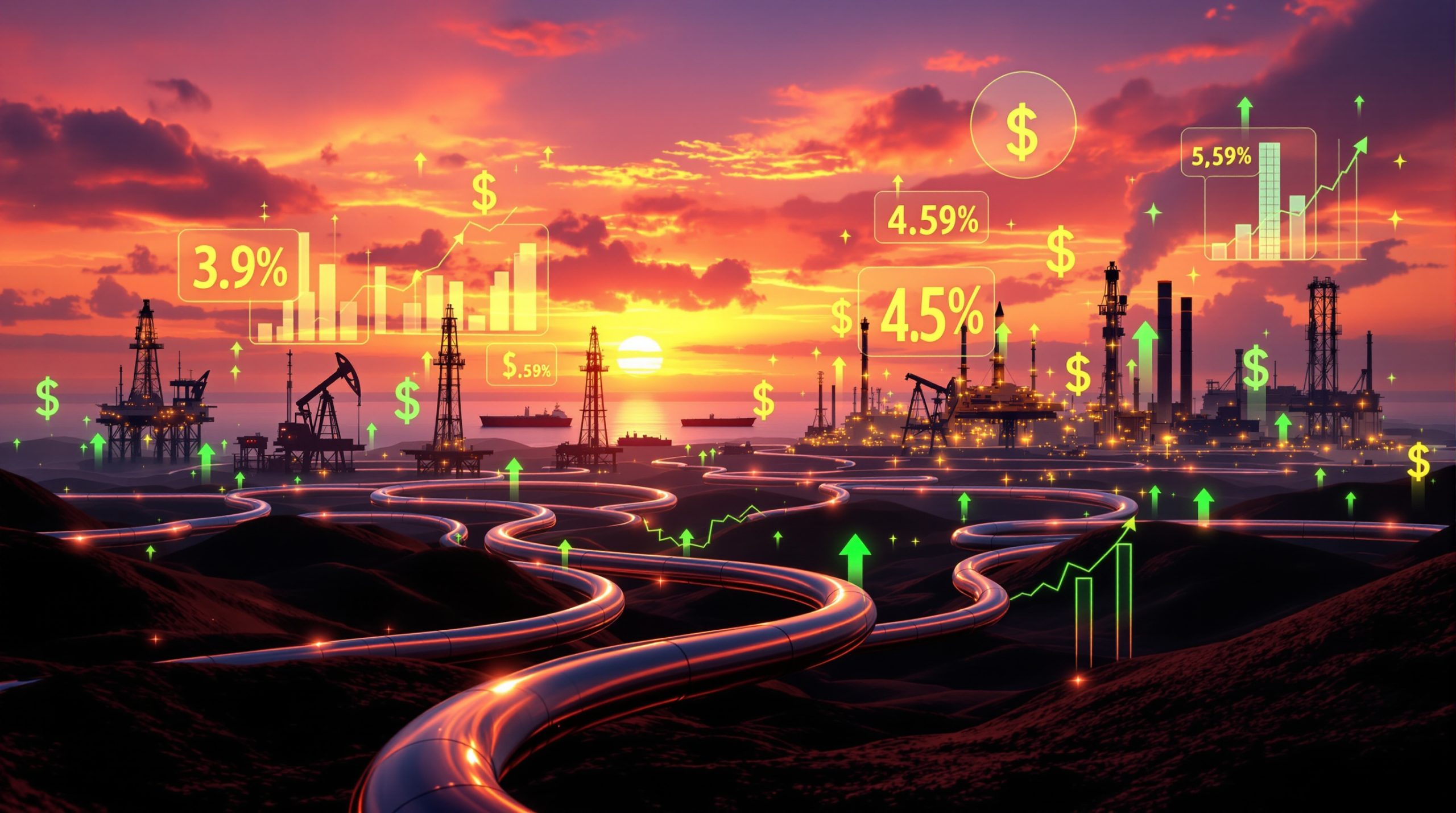Rare-Earth Reserves by Country: Global Distribution and Strategic Importance
Rare-earth elements (REEs) have become the backbone of modern technology, transforming from obscure entries in the periodic table to critical materials underpinning everything from smartphones to missile guidance systems. Despite their name, most rare-earth elements are relatively abundant in Earth's crust – comparable to common industrial metals like copper or zinc. However, their geochemical properties make them seldom concentrated into economically viable deposits, creating natural monopolies and strategic vulnerabilities in the critical minerals race amid geopolitical tensions.
What Are Rare Earth Elements?
Rare earth elements comprise 17 chemically similar elements: the 15 lanthanides plus scandium and yttrium. Despite frequent confusion in terminology, "rare earth elements" specifically refers to the elements themselves, while "rare earth metals" describes their metallic forms, and "rare earth oxides" refers to compounds commonly traded in international markets.
The lanthanide series includes: lanthanum, cerium, praseodymium, neodymium, promethium, samarium, europium, gadolinium, terbium, dysprosium, holmium, erbium, thulium, ytterbium, and lutetium. Scandium and yttrium are included because they typically occur in the same ore deposits and exhibit similar chemical properties.
What makes these elements particularly valuable is their unique electron configurations, which create exceptional magnetic, luminescent, and electrochemical properties not replicated by other materials. For instance, neodymium creates the strongest permanent magnets known, while europium produces precise red phosphors essential for displays.
A common misconception is that "rare earth" indicates scarcity. In reality, cerium is as abundant as copper, while even the scarcest (thulium and lutetium) are more common than gold or platinum. The challenge lies in finding concentrations economically viable for extraction.
Why Are Rare Earth Elements So Valuable?
The strategic value of rare earths has grown exponentially with technological advancement. A single F-35 fighter jet requires approximately 417 kg of rare earth materials, while each Toyota Prius electric motor contains about 1 kg of neodymium, and each vehicle battery uses 10-15 kg of lanthanum.
The green energy transition has dramatically increased demand projections. Wind turbines require up to 600 kg of rare earth elements per megawatt of capacity, creating enormous pressure on supply chains. Global demand for rare earths is projected to increase from 130,000 tonnes in 2021 to more than 220,000 tonnes by 2030, according to the International Energy Agency.
The concentration of production and processing capabilities in China has created significant geopolitical tensions. When China restricted exports in 2010, prices for some elements like dysprosium and terbium increased by more than 500%, creating shockwaves through global supply chains and demonstrating the market's vulnerability to supply disruptions.
Which Countries Have the Largest Rare Earth Reserves?
China: The Global Leader
China dominates the rare earth landscape with an estimated 44 million tonnes of reserves, representing approximately 37% of known global rare-earth reserves by country. The country's rare earth industry developed strategically since the 1980s through significant government investment when other nations viewed these materials as niche resources.
The largest deposits are concentrated in Inner Mongolia (Bayan Obo region), southern provinces (particularly Jiangxi and Guangdong), and Sichuan. China's dominance extends beyond mining – controlling approximately 85% of global processing capacity, particularly for heavy rare earths like dysprosium and terbium.
Chinese policies have evolved from unrestricted production to stricter environmental regulations and export controls, including a 2022 consolidation of rare earth assets into state-controlled entities. This restructuring aims to strengthen Beijing's control over pricing and supply.
The environmental toll has been significant. The production of one tonne of rare earth elements typically generates 2,000 tonnes of toxic waste. The Bayan Obo region has faced severe groundwater contamination and radioactive waste issues from processing thorium-containing ores.
Vietnam: The Emerging Player
Vietnam possesses the world's second-largest reserves at approximately 22 million tonnes, primarily in the northwestern provinces of Lai Châu and Yên Bái. Despite these substantial reserves, actual production remains minimal at under 400 tonnes annually.
The Vietnamese government has approved ambitious development plans targeting production capacity of 5,000 tonnes annually by 2025. However, infrastructure limitations, technical expertise shortages, and environmental concerns have hampered rapid development.
Japanese investments have been particularly significant, with Toyota Tsusho and Sojitz Corporation forming joint ventures with Vietnamese entities. This reflects Japan's strategy to reduce dependency on Chinese supplies following the 2010 export restrictions.
Environmental challenges include managing radioactive thorium and uranium naturally occurring alongside rare earth deposits. Vietnam's experience with bauxite mining pollution has made communities cautious about rapid rare earth development.
Brazil: South America's Rare Earth Giant
Brazil holds approximately 21 million tonnes of rare earth reserves, primarily in the states of Minas Gerais and Goiás. The country's production remains negligible compared to its potential, with technical challenges and infrastructure limitations hampering development.
The most significant project is the Serra Verde mine in Minaçu, which commenced commercial production in 2023 with projected capacity of 5,000 tonnes annually of rare earth oxides by 2025. Unlike many global deposits, Brazilian rare earths are often found in ionic clay deposits similar to those in southern China, potentially offering more environmentally sustainable extraction methods.
Regulatory challenges include complex licensing procedures and uncertain taxation policies. Recent reforms aim to streamline approvals while maintaining environmental standards, particularly important given the Amazon region's ecological sensitivity.
Russia: Significant but Underdeveloped Reserves
Russia possesses approximately 10 million tonnes of rare earth reserves, with the largest deposits located in the Murmansk region (Lovozero complex), Yakutia, and the Kola Peninsula. Current production remains limited at about 2,600 tonnes annually, primarily as by-products from apatite and loparite mining.
The Russian government declared rare earths "strategically important" in 2020, implementing tax incentives for new projects. The Tomtor deposit in Yakutia is particularly significant, with estimated reserves of 154 million tonnes of ore containing high concentrations of neodymium and praseodymium.
International sanctions following the Ukraine invasion have complicated development plans, particularly affecting technology transfers and financing for new processing facilities. Pre-war projections targeted production increases to 7,000 tonnes annually by 2025, but these timelines now appear unrealistic.
India: Growing Importance in the Global Market
India holds approximately 6.9 million tonnes of rare earth reserves, concentrated in coastal heavy mineral sands containing monazite in Kerala, Tamil Nadu, and Odisha. Current production remains modest at approximately 3,000 tonnes annually.
The government-owned Indian Rare Earths Limited (IREL) dominates the sector, though recent policy changes have opened opportunities for private investment. India's National Critical Minerals Mission specifically targets rare earth element development through public-private partnerships.
A significant challenge is limited separation and processing capability, with most materials requiring export for high-purity processing. Technical partnerships with Japan and Australia aim to address this gap, with plans for a jointly developed processing facility in Vishakhapatnam.
How Are Other Countries Positioned in the Rare Earth Market?
Australia: Western World's Primary Producer
Australia possesses approximately 5.7 million tonnes of rare earth reserves but has emerged as the Western world's most significant producer with approximately 21,000 tonnes annual production. The Lynas Corporation operates the Mount Weld mine in Western Australia, one of the world's highest-grade rare earth deposits.
Australian operations have pioneered environmentally responsible practices, with strict regulations on waste management and land rehabilitation. The government's 2022 Critical Minerals Strategy provides $2 billion in processing incentives, including a boost for Iluka's rare earth refinery, aiming to develop domestic separation capabilities rather than sending concentrates to Malaysia for processing.
United States: Rebuilding Domestic Capacity
The United States holds approximately 1.8 million tonnes of rare earth reserves, primarily in California, Texas, and Wyoming. Domestic production has fluctuated dramatically, from world leadership in the 1980s to near-complete dependency on imports by 2010, and now gradual rebuilding of capacity.
The Mountain Pass mine in California, operated by MP Materials, restarted production in 2018 and now produces approximately 15% of global rare earth concentrates. However, the concentrate still requires export to China for separation into individual elements – a vulnerability the company aims to address with a $700 million investment in domestic processing capabilities by 2025.
The Department of Defense has directly invested in projects like Lynas' processing facility in Texas, while the 2022 Inflation Reduction Act provides significant tax incentives for domestic critical mineral development. Environmental regulations remain stringent, with modern operations requiring comprehensive waste management systems that dramatically increase costs compared to less regulated jurisdictions.
Emerging Players in the Rare Earth Market
Several countries with smaller but still significant reserves are developing extraction capabilities:
-
Greenland (1.5 million tonnes): The Kvanefjeld project contains one of the world's largest deposits of rare earths, though development faces environmental opposition due to uranium content.
-
Tanzania (890,000 tonnes): The Ngualla project is advancing toward production with projected capacity of 5,000 tonnes annually by 2025.
-
Canada (830,000 tonnes): Multiple projects in development, with the Strange Lake deposit in Quebec containing significant heavy rare earth concentrations crucial for permanent magnets.
-
South Africa (790,000 tonnes): The Steenkampskraal mine, formerly producing thorium, contains high-grade rare earth deposits with planned production of 2,700 tonnes annually.
What Are Rare Earth Elements Used For?
Critical Applications in Consumer Electronics
Rare earth elements are essential components in everyday technology. Smartphone speakers utilize neodymium magnets, while vibration motors contain praseodymium and dysprosium. Display technologies depend on europium and yttrium for accurate color reproduction, with a typical smartphone containing approximately 1 gram of various rare earth elements.
Hard disk drives rely on neodymium magnets to control reading heads, with each drive containing up to 10 grams. The miniaturization trend in electronics has actually increased rare earth intensity, as smaller components require stronger magnetic fields to maintain performance.
Wireless earbuds represent one of the fastest-growing applications, with production increasing from 120 million units in 2019 to over 300 million in 2023, each containing 80-100mg of rare earth elements.
Renewable Energy Technologies
The clean energy transition dramatically increases rare earth demand. A single 3MW wind turbine can contain up to 2 tonnes of rare earth permanent magnets, primarily neodymium and dysprosium. Direct drive turbines (without gearboxes) are particularly rare earth intensive but offer higher reliability for offshore installations.
Electric vehicle motors typically contain 1-2kg of rare earth magnets, with higher performance models requiring additional quantities. Annual production of 10 million electric vehicles requires approximately 15,000 tonnes of rare earth elements – approximately 12% of current global production.
Energy storage systems increasingly utilize lanthanum for nickel-metal hydride batteries, while cerium serves as a catalyst in hydrogen fuel cells. Grid infrastructure depends on yttrium barium copper oxide superconductors for high-efficiency transmission, highlighting mining's crucial role in the clean energy transition.
Advanced Manufacturing and Industrial Uses
Industrial applications consume nearly 20% of rare earth production. Petroleum refining relies on lanthanum and cerium catalysts, processing approximately 500,000 barrels daily. Glass manufacturers use cerium oxide for precision polishing and UV protection, with a typical manufacturing facility consuming 5-10 tonnes annually.
Phosphors for energy-efficient lighting require europium, terbium, and yttrium, though LED technology has reduced per-unit consumption compared to fluorescent lighting. Industrial magnets for motors, generators, and sensors constitute the largest single application by volume, consuming approximately 29% of total rare earth production.
Defense and Aerospace Applications
Military applications represent a small percentage of total consumption but critical strategic importance. Guidance systems in precision munitions rely on samarium-cobalt magnets that maintain performance at extreme temperatures. Night vision devices require gadolinium and yttrium for image intensification.
Jet engines incorporate rare earth elements in specialized alloys, with rhenium-containing superalloys maintaining structural integrity at high temperatures. Communication systems utilize rare earth-based amplifiers and filters for signal clarity, while radar systems depend on rare earth magnets for precision control.
Satellite technology has become increasingly rare earth dependent, with each communications satellite containing 600-700kg of various rare earth components. The projected satellite launch rate of 1,000+ annually by 2025 represents significant demand growth.
What Is the Biggest Rare Earth Element Mine in the World?
Bayan Obo Mine: China's Rare Earth Giant
The Bayan Obo mine in Inner Mongolia remains the world's largest rare earth operation, producing approximately 45,000 tonnes annually – roughly 35% of global output. Originally developed as an iron ore mine in 1927, rare earth extraction began in the 1950s as a by-product.
The deposit contains primarily light rare earths (lanthanum, cerium, praseodymium, and neodymium) with estimated reserves exceeding 800 million tonnes of iron-rare earth ore. The mining area extends over 48 square kilometers with an open pit operation reaching depths of 1,000 meters.
Processing methods involve complex acid leaching and solvent extraction, requiring approximately 150 tons of water per ton of rare earth oxides produced. Environmental challenges include managing approximately 10 million tons of wastewater annually and tailings containing radioactive thorium.
Other Significant Rare Earth Mines Globally
While Bayan Obo dominates production, several other operations are noteworthy:
-
Mountain Pass (United States): Currently producing 43,000 tonnes of rare earth concentrate annually, though requiring export for separation.
-
Mount Weld (Australia): Producing approximately 21,000 tonnes annually with some of the highest ore grades globally at 8.4% rare earth oxides.
-
Ion-adsorption clay deposits (Southern China): Though individually small, collectively these deposits provide most of the world's heavy rare earths crucial for high-performance magnets.
Emerging operations include Vietnam's Lai Châu project, Tanzania's Ngualla development, and Greenland's Kvanefjeld deposit, which could collectively add 30,000-40,000 tonnes of annual capacity by 2030.
How Is the Rare Earth Market Evolving?
Supply Chain Challenges and Diversification Efforts
The rare earth market faces significant structural challenges. Processing represents a particularly severe bottleneck, with China controlling approximately 85% of separation capacity. Establishing new processing facilities typically requires 5-7 years and investment exceeding $500 million, with technical expertise remaining concentrated.
Recycling offers partial mitigation, though current recovery rates remain below 1% globally. The most promising recycling streams come from magnets in wind turbines and electric vehicles, with each recycled EV potentially recovering 1-2kg of rare earth elements. Companies like Rhône Technologies have developed solvent extraction processes achieving 90% recovery rates from end-of-life products.
Substitution research focuses on reducing dysprosium and terbium in magnets through grain boundary diffusion technology, potentially reducing consumption by 30-40% while maintaining performance. Alternative technologies like high-temperature superconductors could eventually replace some magnet applications, though commercialization timelines remain uncertain.
Environmental and Sustainability Considerations
Environmental impacts represent both ethical and economic challenges for the industry. Conventional rare earth processing produces approximately 2,000 tonnes of toxic waste per tonne of rare earth oxides, including acidic wastewater and radioactive residues.
Water consumption presents particular concerns, with processing facilities typically requiring 200-600 cubic meters of water per tonne of product. New technologies like China's in-situ leaching for ion-adsorption deposits reduce water usage by approximately 70% while minimizing surface disturbance.
Regulatory frameworks vary dramatically globally, creating approximately $20-40 per kilogram cost disadvantages for producers adhering to strict environmental standards. The EU's proposed Critical Raw Materials Act includes environmental performance metrics for imports, potentially reshaping global standards.
Future Outlook for Rare Earth Elements
Demand projections indicate consumption growth of 7-8% annually through 2030, driven primarily by permanent magnets for electric vehicles and wind turbines. Supply constraints appear inevitable for heavy rare earths like dysprosium and terbium, with price volatility expected to continue.
Geopolitical factors increasingly influence market dynamics, with "friend-shoring" initiatives creating parallel supply chains based on political alignment rather than purely economic factors. The AUKUS security partnership between Australia, the UK, and the US specifically targets rare earth development outside China, with Australia's $2.5 million critical minerals grant boo
Ready to Capitalise on the Next Rare Earth Discovery?
Stay ahead of the market with Discovery Alert's proprietary Discovery IQ model, which instantly analyses ASX announcements to identify significant rare earth and critical mineral discoveries before the broader market reacts. Explore how historic discoveries have generated substantial returns by visiting Discovery Alert's dedicated discoveries page and begin your 30-day free trial today.




